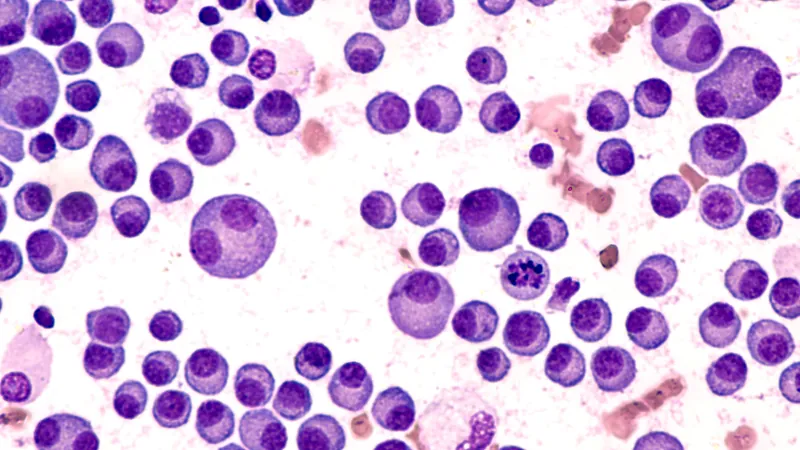
Unlocking New Potential: The ADAR1 Gene's Role in Overcoming Lenalidomide Resistance in Multiple Myeloma
2025-04-15
Author: Ming
A Breakthrough in Multiple Myeloma Treatment!
Recent research has unveiled a significant hurdle in the fight against multiple myeloma—a common blood cancer—by identifying the ADAR1 gene as a crucial factor hindering the efficacy of lenalidomide. Published in the journal Blood, this groundbreaking study suggests that while ADAR1 contributes to acquired resistance, its impact might be reversible.
Insights from Expert Researchers
Led by Dr. Mun Yee Koh from the Cancer Science Institute of Singapore, the study emphasizes the urgency of these findings. With new immunomodulatory drug (IMiD) analogues like cereblon (CRBN) E3 ligase modulators entering clinical trials, understanding ADAR1's role could be pivotal for improving treatment strategies and ultimately patient outcomes.
Diving Into the Study: Methods and Discoveries
The researchers aimed to explore alternative resistance mechanisms to lenalidomide, noting that a startling 20% to 30% of these mechanisms arise from alterations in the CRBN pathway. This pathway is vital as it connects directly to how lenalidomide functions—by promoting the degradation of crucial proteins that help myeloma cells thrive.
By analyzing RNA sequencing data from lenalidomide-treated myeloma cells along with molecular profiling from patients in the CoMMpass study, the team discovered that lenalidomide activates a double-stranded RNA-sensing pathway mediated by MDA5, which in turn triggers an ADAR1-regulated cell death response.
The Role of ADAR1: Resistance and Sensitivity Uncovered
A striking outcome from the study revealed that overexpressing ADAR1 can diminish the effectiveness of lenalidomide, intensifying RNA editing and suppressing RNA-sensing pathways. Conversely, reducing ADAR1 levels made myeloma cells more susceptible to immunomodulatory drugs by leveraging these pathways and enhancing interferon responses.
What’s Next? The Future of Therapy!
As clinical trials for CRBN E3 ligase modulators and other innovative immunomodulatory drug analogues progress, the exploration of ADAR1 inhibitors is also on the horizon. This preclinical development may lead to even more effective combinations in tackling treatment resistance in multiple myeloma.
The research team is committed to delving deeper into ADAR1’s role and its influence on the splicing mechanisms in multiple myeloma—offering hope for new therapeutic strategies that could redefine the treatment landscape for this challenging condition.



 Brasil (PT)
Brasil (PT)
 Canada (EN)
Canada (EN)
 Chile (ES)
Chile (ES)
 Česko (CS)
Česko (CS)
 대한민국 (KO)
대한민국 (KO)
 España (ES)
España (ES)
 France (FR)
France (FR)
 Hong Kong (EN)
Hong Kong (EN)
 Italia (IT)
Italia (IT)
 日本 (JA)
日本 (JA)
 Magyarország (HU)
Magyarország (HU)
 Norge (NO)
Norge (NO)
 Polska (PL)
Polska (PL)
 Schweiz (DE)
Schweiz (DE)
 Singapore (EN)
Singapore (EN)
 Sverige (SV)
Sverige (SV)
 Suomi (FI)
Suomi (FI)
 Türkiye (TR)
Türkiye (TR)
 الإمارات العربية المتحدة (AR)
الإمارات العربية المتحدة (AR)